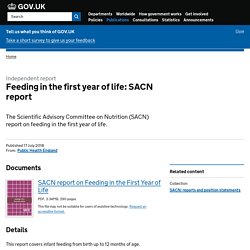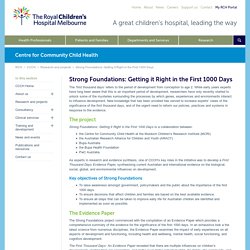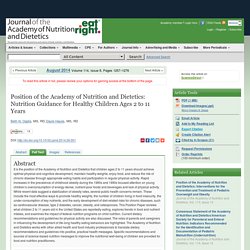

Advocacy for Improving Nutrition in the First 1000 Days To Support Childhood Development and Adult Health. Position Paper: Plant-based Milks. See “GOT MILK-ish?”

By Rosen on page 149. Parents and caretakers are increasingly feeding infants and young children plant-based “milk” (PBM) alternatives to cow milk (CM) (1–5). In some cases, this is related to CM allergy or intolerance or the perception that these conditions are present. In addition, pediatricians and pediatric gastroenterologists are increasingly seeing families with health beliefs or religious or cultural values that either preclude CM intake or lead to a strong preference to avoid it (3).
For some, this may be related in part to ecological concerns related to the environmental impact of extensive dairy farming (3,6,7). This Position Paper has its origins in a NASPGHAN response to a September 18, 2018 FDA Federal Register Request for Comment regarding the “Use of the Names of Dairy Foods in the Labeling of Plant-Based Products” (Docket No. Milk's contribution to the protein intake of young children is especially important. Acknowledgments 1. 2. 3. 4. 5. 6. 7. 8. 9. Feeding Infants and Children from Birth to 24 Months: Summarizing Existing Guidance.
CONSENSUS STATEMENT Healthy Beverage Consumption in Early Childhood. International Society for the Study of Fatty Acids and Lipids 2018 Symposium: Arachidonic and Docosahexaenoic Acids in Infant Development - FullText - Annals of Nutrition and Metabolism 2019, Vol. 74, No. 1. Position of the Academy of Nutrition and Dietetics: Benchmarks for Nutrition in Child Care - Journal of the Academy of Nutrition and Dietetics. Feeding in the first year of life: SACN report.
This report covers infant feeding from birth up to 12 months of age.

The report considers evidence on the impact of infant feeding on short and longer term health outcomes for infants and mothers. It also considers factors that influence eating behaviour and diversification of the diet and makes recommendations on feeding in the first year of life. SACN’s conclusions are largely consistent with existing advice on infant feeding, the introduction of solid foods and diversification of the infant diet.
In particular, SACN concludes that breastfeeding makes an important contribution to infant and maternal health. SACN recommends retaining existing advice for women to exclusively breastfeed for around the first 6 months and to continue breastfeeding for at least the first year of life once solid foods have been introduced. SACN recommends that a wide variety of solids foods, including iron-containing foods should be introduced in an age appropriate form from around 6 months of age. Sugar in Infants, Children and Adolescents: A Position Pape... : Journal of Pediatric Gastroenterology and Nutrition. What Is Known The consumption of sugar-sweetened beverages and free sugars in children is too high.

Sugar-sweetened beverages/free sugars increase the risk for dental caries and overweight/obesity, can result in poor nutrient, supply and reduced dietary diversity, and may be associated with increased cardiovascular risk. What Is New. Getting it Right in the First 1000 Days. The ‘first thousand days’ refers to the period of development from conception to age 2.

While early years experts have long been aware that this is an important period of development, researchers have only recently started to unlock some of the mysteries surrounding the processes by which genes, experiences and environments interact to influence development. New knowledge that has been unveiled has served to increase experts’ views of the significance of the first thousand days, and of the urgent need to reform our policies, practices and systems in response to the evidence. The project Strong Foundations: Getting it Right in the First 1000 Days is a collaboration between: the Centre for Community Child Health at the Murdoch Children’s Research Institute (MCRI)the Australian Research Alliance for Children and Youth (ARACY)Bupa Australiathe Bupa Health FoundationPwC Australia. Key objectives of Strong Foundations The Evidence Paper Key documents What can we do? Keep informed. Fruit Juice in Infants, Children, and Adolescents: Current Recommendations.
First Steps Nutrition Trust - homepage. 2014 Nutrition Guidance for Healthy Children Ages 2 to 11 Years: Position of the Academy of Nutrition and Dietetics. To view the full text, please login as a subscribed user or purchase a subscription.

Click here to view the full text on ScienceDirect. Abstract It is the position of the Academy of Nutrition and Dietetics that children ages 2 to 11 years should achieve optimal physical and cognitive development, maintain healthy weights, enjoy food, and reduce the risk of chronic disease through appropriate eating habits and participation in regular physical activity. Rapid increases in the prevalence of childhood obesity during the 1980s and 1990s focused attention on young children’s overconsumption of energy-dense, nutrient-poor foods and beverages and lack of physical activity.
While recent data suggest a stabilization of obesity rates, several public health concerns remain. Sugars intake for adult and children. Potassium intake for adults and children. Sodium intake for adults and children. What’s in the Bottle? A Review of Infant Formulas. הרגלי אכילה וקשרי האכלה לגדילה והתפתחות בריאה בילדות, מלידה ועד גיל 6 שנים. נייר עמדה צריכה מומלצת של חלב פרה ו/או ומוצריו על ידי תינוקות, ילדים ומתבגרים.